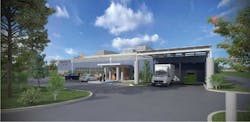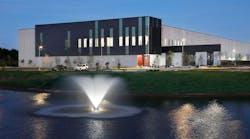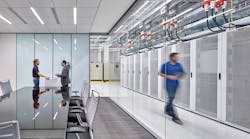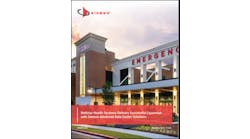In this edition of “Voices of the Industry” Chris Crosby, CEO of Compass Datacenters looks at how shifting business demands may change the location of many data centers, putting data centers close to customers and data. In other words ‘Close to the Edge.’
Chris Crosby, CEO, Compass Datacenters
For those of you old enough to remember, Christopher Columbus wasn’t always a symbol of western imperialism and a destroyer of indigenous cultures. As we learned sometime around the first grade, he was an explorer seeking a faster path to East Asia who “discovered” America. Despite his rather obvious shortcomings as a navigator—and the fact that he actually never landed on U.S. soil—our teachers taught us that Columbus was a brave guy because at the time he began his voyage most people thought the earth was flat and if you went too far you’d sail over the edge.
Now that we’re older and realize the story is largely apocryphal—the Greeks realized that the planet was round almost 1,000 years before—I think its still okay to wonder just would have happened to C2 in a world resembling your dining room table if he had sailed too close to the edge. For example, just where would the edge be, and how close could you actually get? In a sense, these are the same type of questions that more and more data center operators will need to answer in the next few years.
As you’ve probably heard, tracking everything from factory components to a wayward spouse—at this stage, why limit the possibilities—will be achievable via the Internet of Things (IOT). To paraphrase Carl Sagan, what this means in actuality is billions and billions of bits of data coming from billions and (well, you get the picture) of devices that must all be processed in real time to preserve the value of the information. When many of today’s businesses combine this tsunami of tiny packets with the large, rich packets used to deliver applications such as streaming video, it will become readily apparent that they just might need a new data center or two to prevent this onslaught of traffic from bogging the network down to crawl.
The Big Question is Now “Where”?
Certainly coming to grips with the fact that your current data center needs some help to ensure that your end user’s “just in time” inventory initiative doesn’t become “just in case” or viewers don’t have to watch their favorite movie in five-minute installments, would be a step in the right direction. However, adding capacity in and of itself isn’t the answer. The primary consideration in planning for the addition of new data centers in the foreseeable future will be where to locate them.
In the stratified data center architectures that will become more commonplace in the near future, keeping data as close to your end users as possible will become one of the primary goals in developing a corporate data center strategy. I’ve seen some articles recently in which some of the industry’s largest providers postulate on how Tier 2 markets will become the home of edge facilities. Personally I think this is a little too deterministic. Isn’t a little too early to try and put things into boxes? This mindset probably makes sense for them since they have to convince enough folks that their 50,000 square foot data center in Boston is an “edge” facility.[clickToTweet tweet=”For most businesses, the edge will be set by the unique make-up of the audiences they wish to serve.” quote=”For most businesses, the edge will be set by the unique make-up of the audiences they wish to serve.”]
I think the data processing demands that we are all going to experience in the next few years makes the whole Tier 2, 3, 4… market characterizations obsolete. For most businesses the “edge” will be set by the unique make-up of the audiences they wish to serve. As a result, the geographic location of edge facilities won’t be a function of the population density of a metro area as much as it will be of achieving the lowest possible latency in its communications with both its connected central site and downstream microsites. In other words, as data center networks stratify, site selection becomes amorphous rather then neatly structured.
The next few years will be interesting ones in the data center business. Existing business models will evolve in response to shifting end user requirements and old bromides like “NFL cities” and market Tiers will become more blended. Try as they might, many industry leaders and pundits will try to force fit these changes into pre-existing categories. In a sense they will be somewhat analogous to those who warned Columbus about the dangers of sailing over the edge. Instead what was found to be true in 1492 will be true in the near future: the edge will be wherever it needs to be.
Chris Crosby is the CEO of Compass Datacenters.






